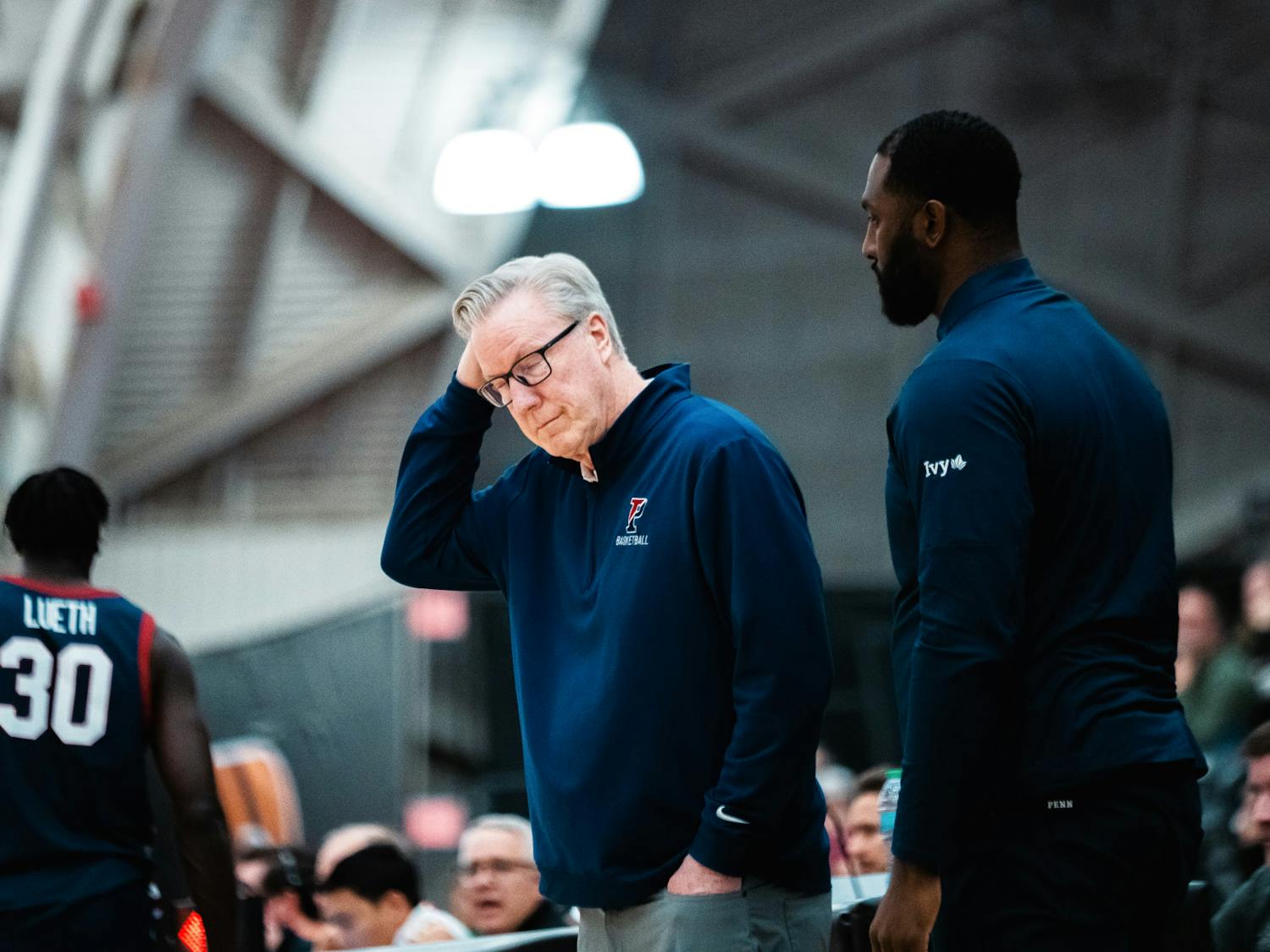When the National Wrestling Coaches Association, Collegiate Swimming Coaches Association of America, United States Track Coaches Association and Collegiate Gymnastics Association agreed to file a lawsuit against the Department of Education claiming insufficiencies in Title IX's current form, it signed along all of its members as well.
Among them are three of Penn's successful coaches -- wrestling coach Roger Reina, men's and women's swimming coach Mike Schnur and men's track coach Charlie Powell.
Reina served as president of the NWCA from 2000-2002 and was on the board of directors that approved filing the lawsuit. Though no longer the president, Reina feels deeply connected to the cause.
"We are literally in a race against time to restore Title IX to its original intent before any more intercollegiate programs are eliminated due to proportionality," Reina said.
Like the views expressed in the lawsuit, Reina's main problem with Title IX is the proportionality clause of the 1979 statute. It permits athletic departments to establish a quota system that mandates proportional representation of the sexes in athletics compared to that of the university at large. He particularly questions the use of participation quotas to measure interest.
"We find it interesting that participation ratios in all other academic programs do not mirror enrollment ratios," Reina said. "Why aren't these other programs being held to the same standard? What if the Wharton School was forced to comply with a strict gender quota?
"The reason is because an institution clearly can't measure interest from enrollment ratios. We can't identify any other part of an academic campus, yet alone in our society, that is accountable to a gender proportionality test similar to what is being applied to athletics."
According to the National Federation of High School Athletic Associations, there is currently a 59-41 percent male-female gender differential in the national high school ranks. There are also 580 more women's teams in the NCAA than men's. Reina claims that these two statistics imply that defining interest through an all-or-nothing policy like quotas is impossible.
He is quick to point out that both he and the NWCA do not claim that women have less of an interest in competing intercollegiately than men.
Schnur, Penn's men's and women's swimming coach since 2000, is more timid about signing on to the lawsuit than Reina, however. While he understands the principle that proportionality cripples lower profile sports, notably men's swimming, he fears that the results of the lawsuit would hinder women's chances to participate in collegiate athletics.
"I think that it's an unrealistic lawsuit because I believe it would take a backwards step," Schnur said. "Their hearts are in the right place, because we've have had lots of high profile programs dropped."
This past year, the swimming community felt a jolt from team consolidation -- much like the 1995 loss of the national champion UCLA men's gymnastics team -- when Nebraska, a perennial top-10 finisher and Big Twelve champion from 1980-1994, dropped its men's swimming program.
While it appears that Title IX isn't affecting the national swimming product, the success can be largely attributed to the extended careers of top U.S. swimmers. Schnur asserts that many of the national team's top athletes are having longer careers than ever before because of the post-graduation financial possibilities in the sport.
"If all of the 26 year olds all of a sudden retired, we'd take a big step back," Schnur said. "The older guys are staying in it now because it's financially feasible."
Powell, a 15-year veteran at the helm of the Penn's men's track squad, has seen Title IX give women rights in collegiate athletics throughout his coaching career.
But he, too, questions the dual effects that Title IX is having on non-revenue sports.
"The reason [I support the lawsuit] is because the aspects of the law that we are against are very specific," Powell said. "If we're going to have equality, let's have equality. Let's not sugarcoat it."
Like Schnur, Powell acknowledges the gender equity that Penn has pursued during his time here.
The athletic department recently released its gender equity report to the federal government for the 2001-2002 year, and Penn athletic director Steve Bilksy says that the University is compliant with Title IX under the second two prongs of the three-part test for gender equity -- Penn has shown a history of expanding its women's athletic programs and has effectively accommodated the interests of intercollegiate program expansion for women.
After ending women's golf in 1952, the university reincorporated the program into the department in 1999. Additions of women's soccer in 1990, women's cross country in 1977, the reincorporation of women's crew in 1974, women's track and field in 1974 and volleyball in 1970 all show the University's history of expansion and accommodation for the underrepresented sex.
Penn does not fit under prong one because of the 59.8-40.2 percent disparity between male and female participation -- the university at large has a 50.9-49.1 male-female ratio.
The results of the gender equity report were virtually identical to those published last year. But in 1997, before the addition of the women's golf team, the male-female ratio was 62.6 percent male to 37.4 percent female.
Like other schools, Penn's 102 participants on the football team this year, and no comparable women's sport of that size, eliminate the chances of fitting under prong one.
"Because we have one of the largest programs in the country, it's not like we could add sports that would give us 100 more people," Bilsky said.
At this time, Penn has no plans to add or cut any sports from its 33-team athletic department.
The Penn Athletic Department is one of the models for the implementation of Title IX because it does not rely on proportionality to prove its gender equity.
Schools are not mandated to comply with Title IX by having proportional representation of female athletes compared to the enrollment at large.
But the option is there. And many administrations have chosen to cut programs out of convenience -- it is easier and more cost effective to drop a men's team than establish a women's program.
If the coaches' associations get their wish, athletic departments will not have this loophole in the future.
Tomorrow, The Daily Pennsylvanian will continue to evaluate the effects of Title IX on intercollegiate athletics after 30 years. The DP will focus on whether or not Title IX has accomplished its stated goals. It will also examine the reverse effects of Title IX on smaller, non-profitable men's sports. The DP will also look at current attitudes in the government and pending legislation regarding the legality and fairness of Title IX.








